Knowing how to change a tire is a necessary skill for all drivers. If you rely on a cell phone to save you in a roadside emergency, there’s always that chance you will forget to charge it, be out of range, or leave it at home. Flat tires can happen anywhere, and a cell phone is no substitute for knowing how to change a flat tire.
Thankfully, changing a tire isn’t all that hard! Just adhere to the following guidelines to be prepared in case you have a flat.
These items should have come with your vehicle:
Jack
Lug wrench
Fully inflated spare tire
Vehicle owner’s manual
If you have misplaced any of these items, or if your car did not come with these items, you should purchase new ones right away. And be sure you’re regularly inflating the spare tire to your vehicle manufacturer’s recommended PSI. You should check the spare’s air pressure every time you check your other tires.
Remember to check pressure every month and before long trips or carrying extra load.
Here are some items that don’t come with your vehicle but that you should stow in your trunk or glove box in case you have to change a flat tire:
Flashlight with working batteries
Rain poncho
Small cut of 2"x6” wood to secure the jack
Gloves
Wheel wedges
As soon as you realize you have a flat tire, do not abruptly brake or turn. Slowly reduce speed and scan your surroundings for a level, straight stretch of road with a wide shoulder. An empty parking lot would be an ideal place. Level ground is good because it will prevent your vehicle from rolling. Also, straight stretches of road are better than curves because oncoming traffic is more likely to see you.
Never attempt to change your tire on a narrow shoulder near oncoming traffic. Keep moving (slowly) until you find a safer spot. While driving on a flat risks ruining your rim, replacing a rim is better than being hit by an inattentive driver.
Make sure to consult your owner’s manual and review their specific steps on how to change a flat tire for your vehicle
Your hazard lights or “flashers” will help other drivers see you on the side of the road. To avoid an accident, turn them on as soon as you realize you need to pull over.
Once stopped, always use the parking brake when preparing to replace a flat tire. This will minimize the possibility of your vehicle rolling.
Wheel wedges go in front of or behind the tires to further ensure the vehicle doesn’t roll while you fix the flat tire. If you’re changing a rear tire, place these in front of the front tires. If your flat tire is at the front, put the wheel wedges behind the rear tires.
Bricks or large stones will work just as well as “real” wheel wedges. Just be sure they’re large enough to stop the car from rolling.
If your vehicle has a hubcap covering the lug nuts, it’s easier to remove the hubcap before lifting the vehicle with the jack.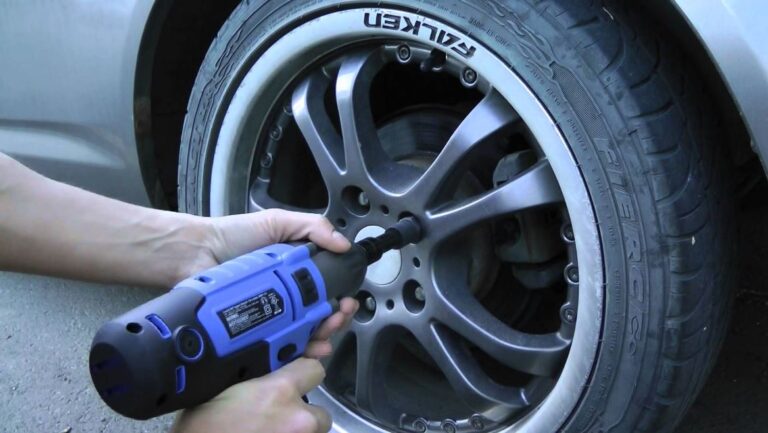 If your lug nuts are exposed, you can skip ahead to Step 6.
If your lug nuts are exposed, you can skip ahead to Step 6.
Use the flat end of your lug wrench to remove the hubcap. This will work for most vehicles, but some hubcaps need a different tool to come off. Consult your owner’s manual for proper hubcap or wheel cover removal procedures.
Using the lug wrench, turn the lug nuts counterclockwise until you break their resistance. You may have to use force, and that’s ok. Use your foot or all of your body weight if necessary.
Loosen the lug nuts about ¼ to ½ of a turn, but don’t remove them completely yet. Save that for when it’s time to remove your tire/wheel from the vehicle.
The right place for the jack is usually beneath the vehicle frame alongside the tire that’s flat. Many vehicle frames have molded plastic on the bottom with a cleared area of exposed metal specifically for the jack. To safely lift and avoid damage to the vehicle, follow the instructions for jack placement in your vehicle owner’s manual.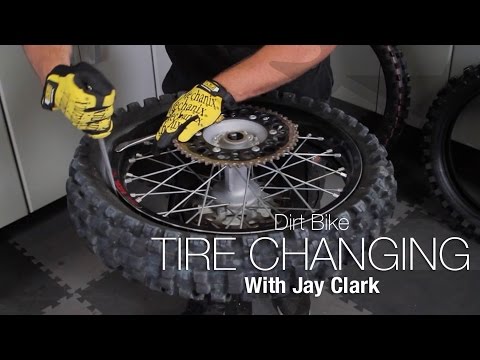
To prevent the jack from settling under the weight of your vehicle and coming off balance, place a small cut of 2x6” wood beneath it before attempting to raise your vehicle. This tactic is especially helpful on asphalt.
With the jack properly positioned, raise the vehicle until the flat tire is about six inches above the ground.
Never put any part of your body under the vehicle during or after raising the vehicle with the jack.
Now it’s time to remove the lug nuts all the way. Since you've already loosened them, you should be able to unscrew them mostly by hand.
Gripping the tire by the treads, pull it gently toward you until it’s completely free from the hub behind it. Set it on its side so that it doesn’t roll away.
Now place the spare on the hub by lining up the rim with the lug bolts. Push gently until the lug bolts show through the rim.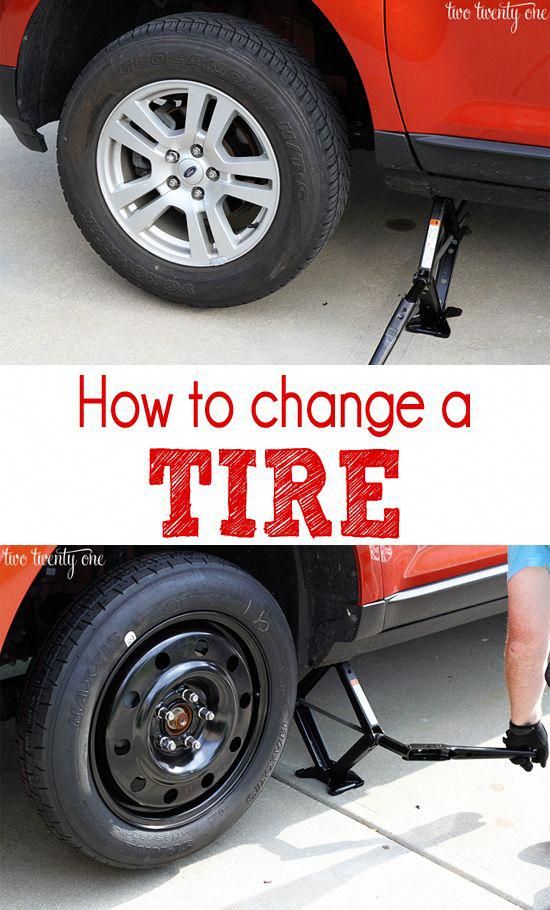
Put the lug nuts back on the lug bolts and tighten them all the way by hand. Once they are all on, check each one again, tightening as much as possible. You will tighten them with the wrench after lowering the vehicle to the ground.
Use the jack to lower the vehicle so that the spare tire is resting on the ground but the full weight of the vehicle isn’t fully on the tire. At this point, you should tighten the lug nuts with the wrench, turning clockwise, as much as you can. Push down on the lug wrench with the full weight of your body.
Bring the vehicle all the way to the ground and remove the jack. Give the lug nuts another pull with the wrench to ensure they’re as tight as possible.
If the hubcap you took from the flat tire will fit your spare, put it in place the same way you removed it initially. If it doesn’t fit, stow it away with the tire when you stow your equipment.
If it doesn’t fit, stow it away with the tire when you stow your equipment.
You have before you a jack, a lug wrench, wheel wedges, your flat tire, and possibly a hubcap. Don’t forget to put all of them in your vehicle before driving away.
You should check the tire pressure of the spare tire to make sure that it is safe to drive on. “T-Type” temporary spares, also called “mini-spares,” require 60 psi (420 kPa). If the tire needs pressure, drive (slowly) to a service station immediately.
Temporary spare tires aren’t made to drive long distances or at high speeds, so drive cautiously until you’re able to visit a tire technician. A professional should be able to determine whether your tire needs a repair or if it’s time to replace it.
Aside from taking your tire to a professional, the above procedure shouldn’t take more than 15 to 30 minutes to change a tire. Just be sure you don’t leave out any steps.
Just be sure you don’t leave out any steps.
It’s beneficial practice changing a tire in your garage or driveway to ensure you’re ready to handle this situation if it ever happens to you.
Knowing how to fix a flat tire is great, but regular tire maintenance is even more important. In addition to reviewing this guide regularly, remember to do the following:
Keep your tires properly inflated
Rotate your tires according to the manufacturer’s guidelines
Monitor for tread wear
All of these precautions will extend the life of your tires and reduce the likelihood of a flat. While there’s no way to prevent flat tires completely, proper care can improve performance and ensure your tires last as long as possible.
There’s never a good time for a flat. That’s why Bridgestone DriveGuard tires are masterfully engineered to keep you moving for up to 50 miles at speeds up to 50 MPH without disruption.
There’s never a good time for a flat. That’s why Bridgestone DriveGuard tires are masterfully engineered to keep you moving for up to 50 miles at speeds up to 50 MPH without disruption.
See Details Find Your Fit
This weekend we traveled to the Nevada desert and were probably going a bit too fast on a dirt road. All it takes is a sharp rock and BOOM there goes your tire which is exactly what happened.
Fortunately, it was the rear tire and after the blowout, we came to a quick stop. That didn’t keep the rim from getting messed up as it was dented on a couple of edges.
We’ve got a full-size spare so after assessing the damage we went to work on changing the flat tire. We were in the middle of the desert so AAA was not a viable option.
Here are the basic steps to changing a flat tire. Instructions will vary based on the type of jack you have and where your spare is located.
Assess the SituationAfter you’ve come to a safe stop make sure you are pulled off to the side of the road as far as you can and if you have them place orange safety triangles or cones behind you or raise your hood to signal to other motorists that you have broken down so they slow down.
Remove the Spare Tire and JackSpare tires are typically located in a well in the trunk beneath the carpet. The jack and tire iron will be there as well. In some vehicles, the spare tire is located in the rear storage area or under the vehicle or attached to the rear door. It’s best to periodically check your spare for air and any tire damage such as rot.
Remove the Flat TireI’ve found it’s best to loosen the lug nuts first before lifting the tire off the ground. You can pull with more force without worrying about the vehicle falling off the jack or the wheel moving.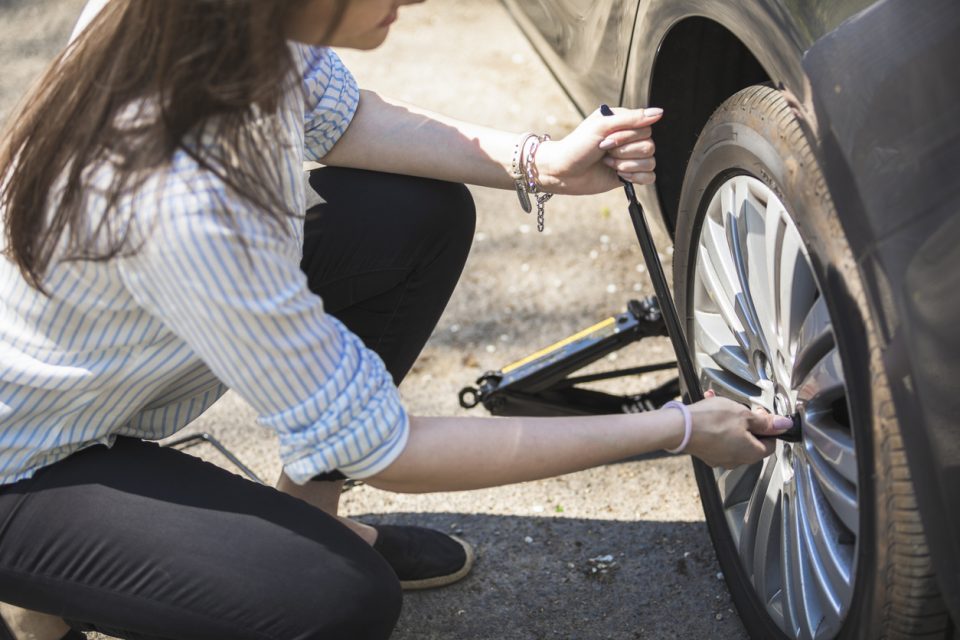
After the nuts are loose then follow your vehicle manufacturers instructions and raise the car. Place chock blocks in front or back and put the emergency brake on before raising the car. Make sure the ground below the jack is solid and not at an angle.
Hydraulic lifts will require you engage the jack by turning a bottom switch to the right. Then when you pump the jack it will raise. When you are done you simply turn the switch to the left and it will release the jack and the car will lower.
Attach the SpareIf you have a full-size spare you are in better shape and will be able to maintain normal speeds but with a small spare you need to change it and get to a garage as soon as possible. Hand tighten the lug nuts but there is no need to overtighten.
Keep the Flat TireYou’ll need to reuse the rim (if it’s reusable) so make sure you put your flat tire in the same place your spare was.
Don’t procrastinate and get your car into a garage. You’ll need to put a regular-sized tire on as soon as possible.
Timothy is the founder and editor of Charles & Hudson and former editor at Popular Mechanics, This Old House, and Lifehacker. His work has been published on Wired, Bob Vila, DIY Network, and The Family Handyman. He is also the founder of the Webby-nominated Built by Kids and host of the popular Tool Crave podcast.
(
Updated:
15/07/2021
)
Article content
It is not uncommon to see remnants of car rubber on the roads, most often a truck tire.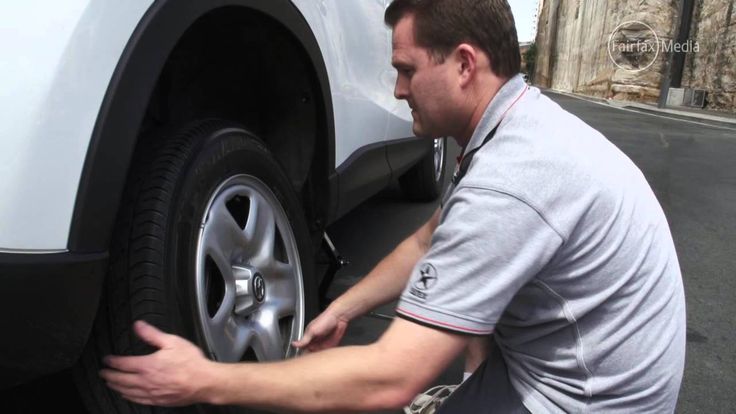 These are the consequences of a car wheel explosion. An unpleasant phenomenon that can lead to loss of control of the car and the creation of an emergency. A truck tire explosion is especially dangerous for other road users, given the heavy weight and dimensions of the dump truck.
These are the consequences of a car wheel explosion. An unpleasant phenomenon that can lead to loss of control of the car and the creation of an emergency. A truck tire explosion is especially dangerous for other road users, given the heavy weight and dimensions of the dump truck.
An inexperienced driver may be unable to drive at high speeds with a broken tire. Therefore, it is necessary to strive to avoid problems in motion. To do this, it is important to identify and eliminate problems in a timely manner.
In addition, tire failure can occur in motion from hitting bumps in the roadway or a foreign object lying on the road. In this situation, it all depends on the attentiveness of the driver of the car. Speed also affects - the higher it is, the more difficult it is to notice and, moreover, to go around an obstacle. In any case, you need to be aware of the possible problem and understand the solutions.
It is worth noting that what actually occurs is not an explosion in the usual sense of the word, but a sharp loss of pressure. Moreover, this can happen with any type of car tires, including tubeless ones, which have recently been popular with many motorists.
Moreover, this can happen with any type of car tires, including tubeless ones, which have recently been popular with many motorists.
A car tire cannot explode just like that, there must be reasons preceding the explosion. The main ones are:

An under-inflated wheel bursts due to overheating - the contact patch with the road surface increases, heating occurs faster. An over-inflated tire can burst when hit by any sharp object.
There are also other reasons that lead to the fact that tires literally explode on the go. One of them is exceeding the maximum speed limit set by the manufacturer for a particular model or series. The limit is indicated on the sidewall of the wheel and in no case should it be exceeded, as this is fraught with serious problems. Another indicator, the excess of which leads to the fact that the tire may burst - the load index. This is especially true for trucks.
If there is an explosion or you find a puncture in advance, you need to purchase a new tire and put it on your car. In the event of an explosion in the direction of travel, a set of measures must be taken:

If you don't have a stowaway or a spare tire, you should try to repair the puncture (assuming there was no explosion, but you know about the damage). To do this, you can use a rubber band or sealant.
Summer Drive Protection Sound Comfort
Rating:
4.5
Tires Goodyear Eagle F1 Asymmetric 3 SUV
Summer Drive protection
Rating:
4.5
Tires Goodyear Eagle Sport TZ
Summer Drive protection
Rating:
4.5
Tires Goodyear EfficientGrip 2 SUV
Summer Drive Protection Run On Flat
Rating:
4. 5
5
Tires Goodyear EfficientGrip Performance
Winter Drive protection
Tires Goodyear UltraGrip Arctic 2 SUV
Winter Drive Protection Sound Comfort
Rating:
4.5
Tires Goodyear UltraGrip Ice 2
Winter Drive Protection Sound Comfort
Rating:
4.5
Tires Goodyear UltraGrip Ice SUV
Winter Drive protection
Tires Goodyear UltraGrip Performance+ SUV
All season Drive protection
Rating:
5
Tires Goodyear Vector 4Seasons Gen-3 SUV
Summer Drive Protection Run On Flat
Rating:
4
Tires Goodyear Wrangler HP All Weather
All season Drive protection
Rating:
4. 5
5
Tires Goodyear Vector 4Seasons
Summer
Rating:
4.5
Tires Goodyear Wrangler All-Terrain Adventure with Kevlar
Summer Drive protection
Rating:
4.5
Tires Goodyear EfficientGrip SUV
Summer Drive Protection Run On Flat
Rating:
4
Tires Goodyear Eagle F1 Asymmetric SUV
Cracks in rubber are not new to car owners. Often they are found during the transition from one season of operation to another and a planned replacement of wheels. The main reasons for the appearance:
Often they are found during the transition from one season of operation to another and a planned replacement of wheels. The main reasons for the appearance:
A cracked wheel can be dangerous for further use. At the same time, its size and possible consequences should be assessed. Depending on the nature of the crack, there are:
Depending on the nature of the crack, there are:
In the first case, the wheel may not burst while driving, if the speed limit is not more than 80 km/h. Sharp maneuvers, starts with sharp acceleration, emergency braking are also contraindicated. Do not tempt fate and practice aggressive driving. If these rules are not followed, the tire may not withstand the load and explode.
Deep damage indicates complete failure. It is strictly forbidden to use a product with such cracks, it must be replaced with a new one. Otherwise, there is a risk that the tire will burst on the go. Dirt, water, chemicals used in winter to remove ice on the road can get into the crack. All this will speed up the process of its destruction.
Regardless of the size and depth of the crack, damaged tires will have to be replaced with new ones.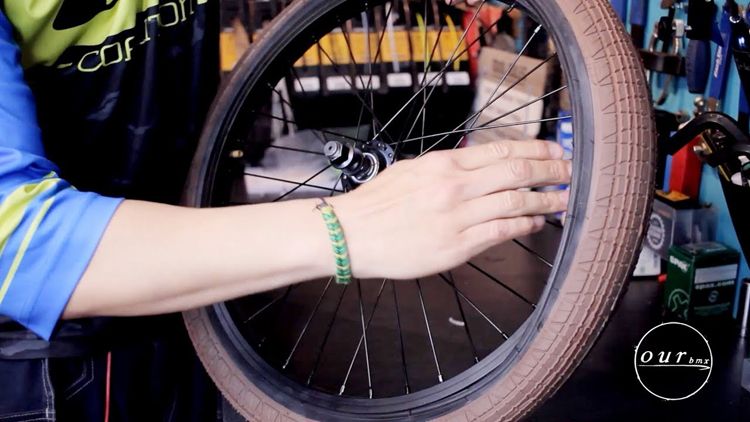 Long-term operation is not allowed. Moreover, under the influence of external factors (water, temperature differences, dust and dirt), cracks will only increase, and the wheel will collapse.
Long-term operation is not allowed. Moreover, under the influence of external factors (water, temperature differences, dust and dirt), cracks will only increase, and the wheel will collapse.
A hernia is no less of a problem than a fissure. This is a swollen bump on the lateral surface (external or internal). The phenomenon is also very dangerous and can lead to an explosion. Although you can often see cars with wheels that show a hernia.

A hernia can be repaired but should not be done. Sooner or later she will appear again. It is best to change the tire and not save on your own safety. Theoretically, you can put a patch, while you will not restore the rigidity, you will break the weight and balance. It is better to buy new wheels, having analyzed the causes of the hernia, in order to prevent this in the future.
In order to avoid bursting a tire on a car, a set of measures must be taken. First of all, it is recommended:
 A hernia or deep cuts, cracks signal a possible puncture or even an explosion.
A hernia or deep cuts, cracks signal a possible puncture or even an explosion. The specified set of measures and common sense will help you avoid unforeseen situations on the road in the form of a burst tire. The main thing is to understand why tires explode, and not to allow it to happen.
Find Goodyear tires for your car
Another season of changing shoes is approaching. And you may remember that on one of the tires after the last winter/summer there is a jamb - a small bump. I don’t want to run to the store for the sake of one new tire. We understand. Or maybe it looks even better if repaired?
Yes, not every wheel that meets with a nail, rebar sticking out of the ground or a sharp stone on the road is considered damaged. Everything, of course, depends on the scale of the damage and its location on the tire itself. Some are easily repaired, while others are simply impossible to do - the tire can only be sent to the trash.
Some are easily repaired, while others are simply impossible to do - the tire can only be sent to the trash.
A bulge on a wheel, referred to by drivers as a bump or bulge, is the most common tire sidewall defect. It appears due to a collision with an obstacle or after falling into a pit, more often at high speed. The threads of the sidewall carcass are easily damaged by impact, and the tire at this point can no longer hold the load and air pressure - swelling appears. A small bump sooner or later turns into a big one, and driving with such a defect is dangerous - the wheel can shoot at any moment. At high speed, this is fraught with loss of control, departure from the road and a rollover.
The quality of roads in Kazakhstan contributes to the appearance of bulges on tires
Some types of bulges are repairable, although this is a temporary measure. Not a single patch can restore the factory rigidity. Ideally, change the tire.
Special cord patches can extend the life of a tire with a herniation, even if the swelling has appeared on the tread. The sidewall is a different story. If the swelling appeared at a distance of more than 40 mm from the side, it can be repaired. If not, then the wheel needs to be replaced. Blisters on low profile tires are most often non-repairable.
The sidewall is a different story. If the swelling appeared at a distance of more than 40 mm from the side, it can be repaired. If not, then the wheel needs to be replaced. Blisters on low profile tires are most often non-repairable.
For maximum safety when riding with a repaired bump, insert the tube. This is an inexpensive and reliable solution. On our market, you can find cameras made in China and Russia, the latter are slightly more expensive, but also of better quality.
The elimination of a side cut is a serious operation, therefore, as in the case of a bump, you will have to go to the professionals. We need cord patches, fortunately in our time they are of different sizes and with a different number of layers. And if you do it wisely, then you can't do without special tools and vulcanization.
A cut, by the way, cannot be healed in all cases. If the gap is in the shoulder area of the tire, it is unlikely that anyone will undertake to repair it, since no guarantees can be given here. However, our Kulibins take on even the most difficult cases, cutting out parts of the sidewalls from the tires and even weaving the cord on their own.
However, our Kulibins take on even the most difficult cases, cutting out parts of the sidewalls from the tires and even weaving the cord on their own.
Tire overhaul. We wouldn't put such a wheel on ourselves
Low-profile tires can be repaired, but more difficult. A tear in the sidewall is easier to seal on tires with a medium or high profile.
Sometimes a cut is confused with a pluck. This is when the outer layer of the sidewall caught on something sharp, a tear formed, but the frame itself remained intact. There is nothing wrong with that, although the drivers at the tire fitting company successfully repair the cut, for which they take it accordingly.
If a piece of rubber remains on the sidewall, then glue it with ordinary superglue (101st). If it came off, then it is better to cover it with raw rubber and vulcanize. Leaving the pluck bare is not recommended, because the tire carcass, often consisting of a metal cord, will quickly corrode.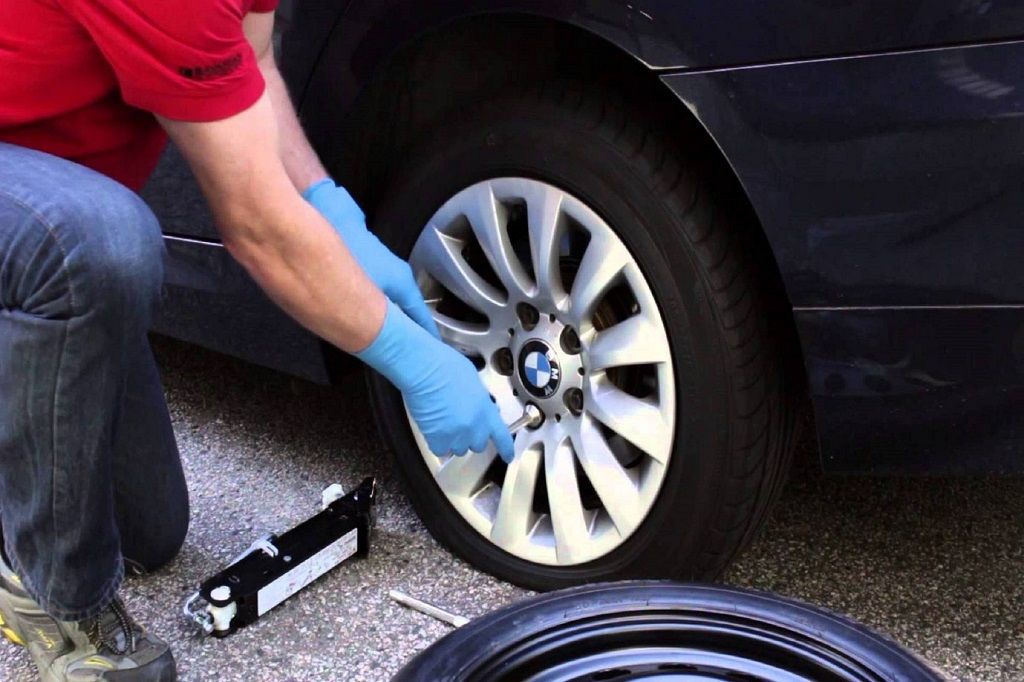
In Europe, defective or used tires are perforated before being sent for scrap to prevent their resale and possible operation. But they don’t know that we have such holes on the sidewall patched once or twice
Cuts and hernias are not the only possible damage to the side of the tire. You can also spoil the side ring, in the process of changing shoes, for example. If it’s for garlic, then such a tire is already dangerous. Sooner or later, the tire pressure and the load in motion will start to squeeze the rubber off the rim - a wheel explosion can occur.
This ailment is repaired if the wire ring - the base - is intact. There are no special technologies and materials to correct this particular problem, but most often craftsmen use a two-component composition for chemical (also called cold) vulcanization. After mixing, the mass is pressed into a fat-free damage. Compound manufacturers recommend waiting 72 hours before mounting a tire. Of course, our masters do not pay attention to this condition - they put the tire right away. And it’s good if the wheel is flat because of this at night in the parking lot, and not on the road.
Of course, our masters do not pay attention to this condition - they put the tire right away. And it’s good if the wheel is flat because of this at night in the parking lot, and not on the road.
If the side ring tears are barely noticeable, but the wheel is still flat, then you can use a special liquid - a bead seal designed to seal a tubeless tire.
These seals have been used in motorsport for some time. In particular, in the American Formula D Drift Series, drivers used compounds to keep the tire on the rim even with minimal tire pressure. Now they are banned.
Pay attention to the left rear wheel of the Nissan Silvia S13. Due to too low pressure, it was literally taken off the disk under load
Every schoolchild has faced this problem when patching the inner tube of his bike after hitting something sharp. Repairing a car tire puncture with your own hands will also not be difficult even on the road. But for this you will need a pump (or compressor) and a universal tire repair kit with harnesses.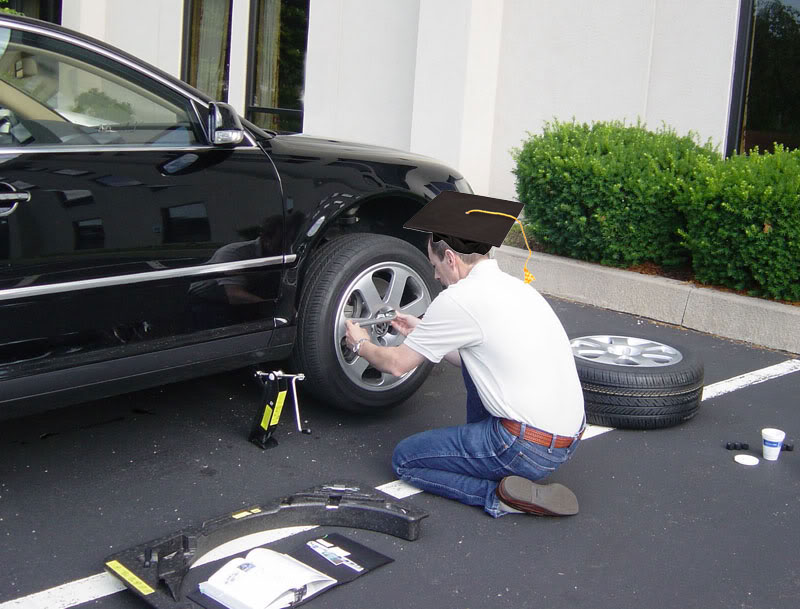 All this is sold at any car market or gas station.
All this is sold at any car market or gas station.
Repairing a tire on the side of the road with harnesses
The process is simple. If we are talking about the front wheels, then in most cases the wheel can not even be removed, it is enough to turn the steering wheel in the right direction, find the puncture site and carry out repairs. First, the hole is cleaned with a helical awl from the set. The tourniquet itself is smeared with glue and tucked into the eye of the awl, after which it is inserted into the tire hole. With a sharp movement, the tool is removed, and the tourniquet remains in place and clogs the hole. The tails are cut with a knife, but not at the root, it is recommended to leave about 20 mm. The tire is inflated and checked.
Sometimes a nail or self-tapping screw clogs the hole by itself, remaining in it. If you see a hat in a tread, do not rush to pull it out. While the pressure is holding, move to vulcanize. And sometimes they drive with a screw in a tire for weeks.
And sometimes they drive with a screw in a tire for weeks.
Repair of a puncture at a tire shop
Punctures are also repaired with harnesses at a specialized service, although among professionals such repairs are not considered long-term. After a few months, the flagella dry out and can let air through. There are more advanced methods like cold and hot vulcanization. The latter is more reliable. In this case, the hole is sealed with an elastic patch, and the funnel from a foreign object is filled with a special compound. After that, a vulcanizer is put on the tire, it heats up the rubber and solders it.
In addition to the plaster, the puncture is also repaired with special cord fungi. Craftsmen process the puncture site: drill it and treat the surface with a tool to roughen it. Then the repair area is lubricated with glue (it is also called cement) and a fungus is introduced. This is done from the inside of the tire. The cap of the fungus is rolled, and the excess legs are simply cut off from the outside.
Puncture repair with sealant
With the advent of tubeless wheels, and later run flat tires, many automakers began to abandon spare wheels. Instead, repair kits with compressors are supplied with the machines. A repair kit is essentially a bottle of pressurized sealant. Later, such spray cans began to appear on the shelves of ordinary car dealerships.
This method has not taken root in the CIS, because the condition of the roads makes it necessary to have at least a stowaway in the kit, but it can also be considered as a method of repair on the road.
Jack up the car and pump sealant through the nipple into the damaged wheel. Next, you should spin the wheel, then pump it up, lower the car and drive a few hundred meters. If the tire tightness has not been restored, repeat the procedure.
For commercial vehicles, cutting the tread with a special device (regrower) is a common thing.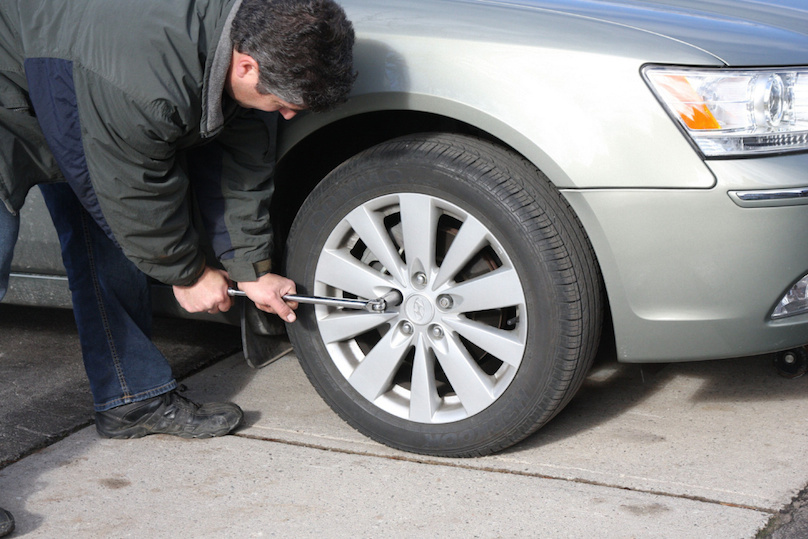 Moreover, such tire retreading is provided by the factory (marked REGROOVABLE on the sidewall) to increase the service life. But there are entrepreneurs who undertake to deepen the grooves in tires for passenger cars. But they are not intended for such an operation. Often used tires for sale are “refreshed” in this way. Be careful!
Moreover, such tire retreading is provided by the factory (marked REGROOVABLE on the sidewall) to increase the service life. But there are entrepreneurs who undertake to deepen the grooves in tires for passenger cars. But they are not intended for such an operation. Often used tires for sale are “refreshed” in this way. Be careful!
What is the danger?
The worst case is that a retreaded tire will shoot out on the road, because when deepening the grooves, the master can damage the undertread layer. Such a tire will not be able to hold pressure at some point. There will be a boom! At best, the tire will indeed last a little longer, but is the game worth the candle? We think it's not worth it.
How is cutting made?
A regrower is used to cut the tread. Roughly speaking, this is a large soldering iron with interchangeable tips of various shapes. It goes through rubber like a knife through butter.
If the tire is for passenger cars, then it is worth taking on a regrower only in one case - when part of the tread pattern was welded with "new" rubber during repair.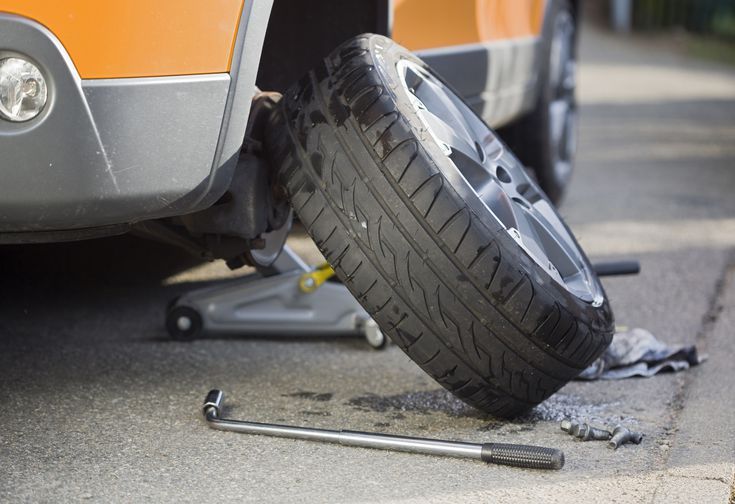 This is where threading comes in handy in order to restore the grooves and symmetry of the tread.
This is where threading comes in handy in order to restore the grooves and symmetry of the tread.
Vehicle operation is prohibited if:
— tires have a residual tread height of less than 1.6 mm;
- tires have punctures, cuts, ruptures that expose the cord, as well as delamination of the carcass, delamination of the tread and sidewall;
- tires in size or load capacity do not match the car model;
- tires of various sizes, designs (radial, diagonal, chamber, tubeless), models, with different tread patterns, winter and summer, studded and non-studded, new and restored, are installed on one axle of the car;
- Tires retreaded according to the second repair class are installed on the front axle.
What is the second class of repair?
This is the case when the tire carcass is restored after serious damage.